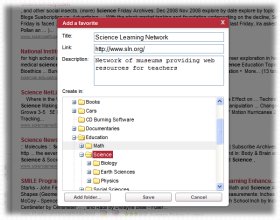|
Education
Web
Viewing 1-1 of 1 total results
Technology/Engineering Curriculum Framework.) Grade 6 Concepts and Skills Students should be able to: Apply concepts and skills learned in previous grades. H GEOGRAPHY kinds of projections, as well as topographic, landform, political, population, and climate maps. (G) peninsula, erosio...
1
0
Technology/Engineering Curriculum Framework.) Grade 6 Concepts and Skills Students should be able to: Apply concepts and skills learned in previous grades. H GEOGRAPHY kinds of projections, as well as topographic, landform, political, population, and climate maps. (G) peninsula, erosion, climate, drought, monsoon, hurricane, ocean and wind currents, tropics, rain forest, tundra, and urbanization. (G) that conveys geographic information (e.g., about rainfall, temperature, or population size data). (G
39
0
http://www.doe.mass.edu/frameworks/hss/final.pdf#page=39
www.doe.mass.edu/frameworks/hss/final.pdf#page=39
Technology/Engineering Curriculum Framework.) Grade 6 Concepts and Skills Students should be able to: Apply concepts and skills learned in previous grades. H GEOGRAPHY kinds of projections, as well as <span class="highlight">topographic</span>, landform, political, population, and climate <span class="highlight">maps</span>. (G) peninsula, erosion, climate, drought, monsoon, hurricane, ocean and wind currents, tropics, rain forest, tundra, and urbanization. (G) that conveys geographic information (e.g., about rainfall, temperature, or population size data). (G
130
0
http://www.doe.mass.edu/frameworks/hss/final.pdf#page=130
www.doe.mass.edu/frameworks/hss/final.pdf#page=130
Grades 1 and 2 (continued) ❚ Tell time at quarter-hour intervals on analog and <span class="highlight">digital</span> clocks using a.m. and p.m. DATA ANALYSIS, STATISTICS, AND PROBABILITY ❚ Use interviews, surveys, and observations to gather data about themselves and their surroundings. ❚ Organize, classify, represent, and interpret data using tallies, charts, tables, bar graphs, pictographs, and Venn diagrams, and interpret the representations. ❚ Formulate inferences (draw conclusions) and make educated guesses (conjectures
|
